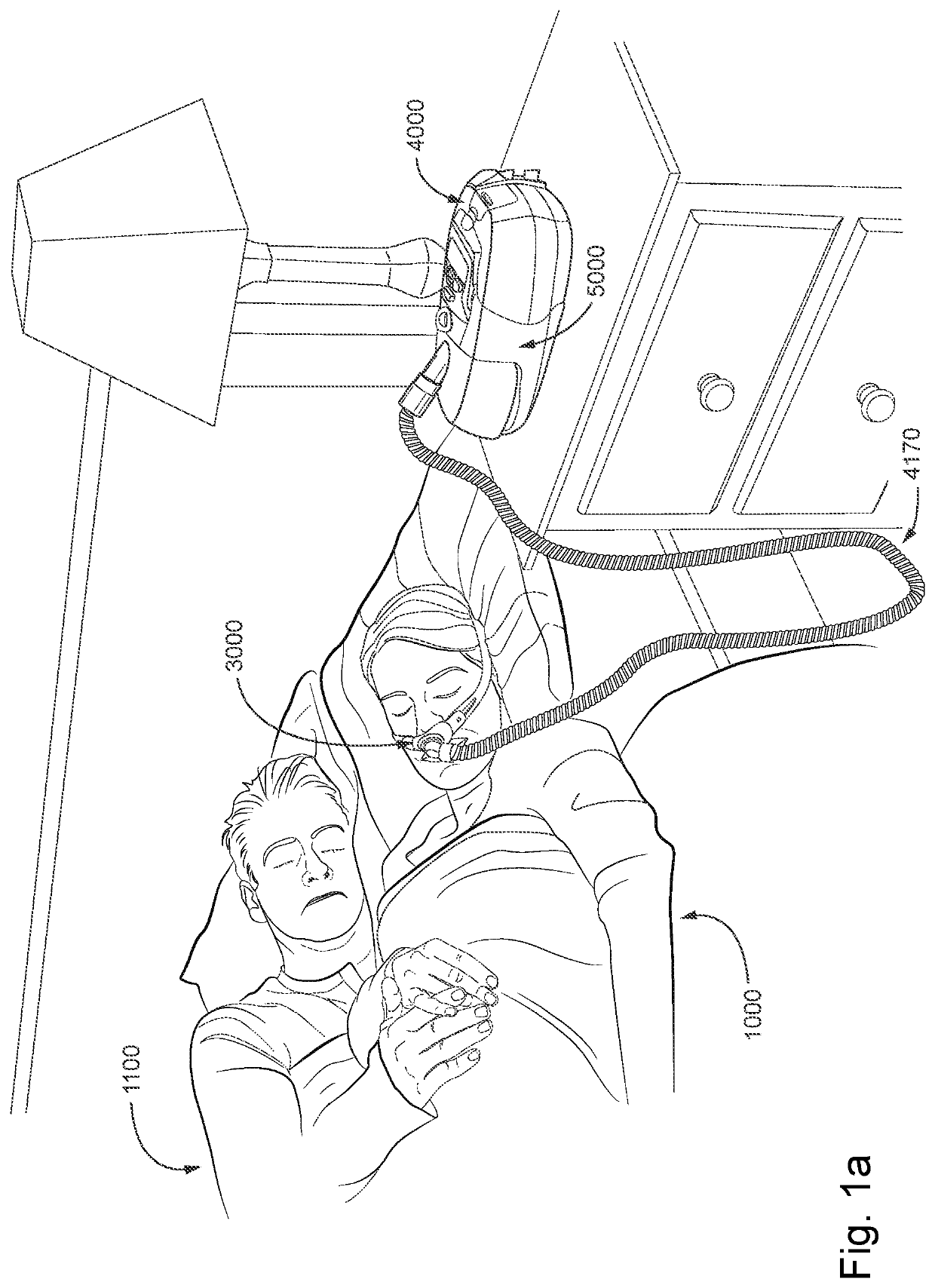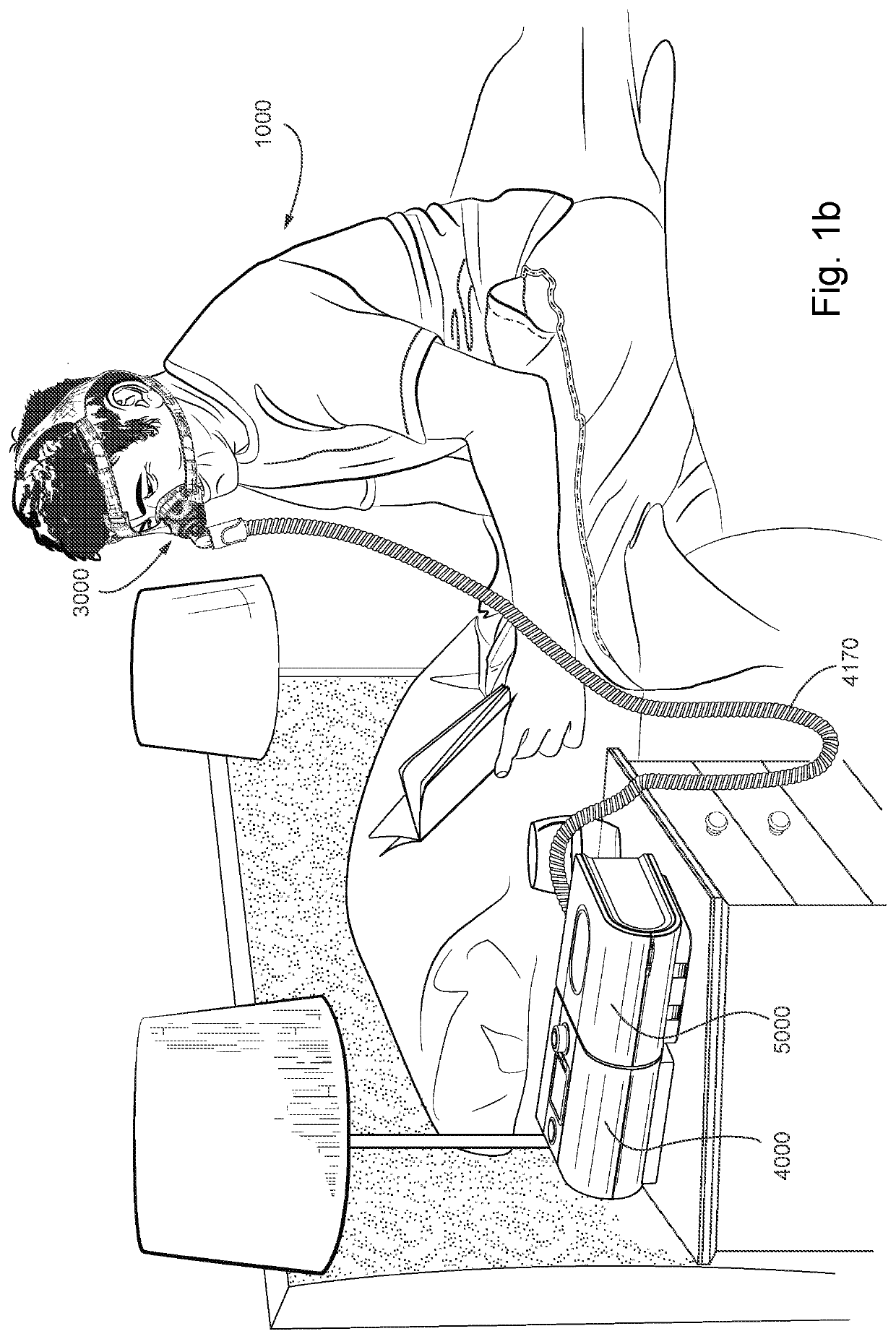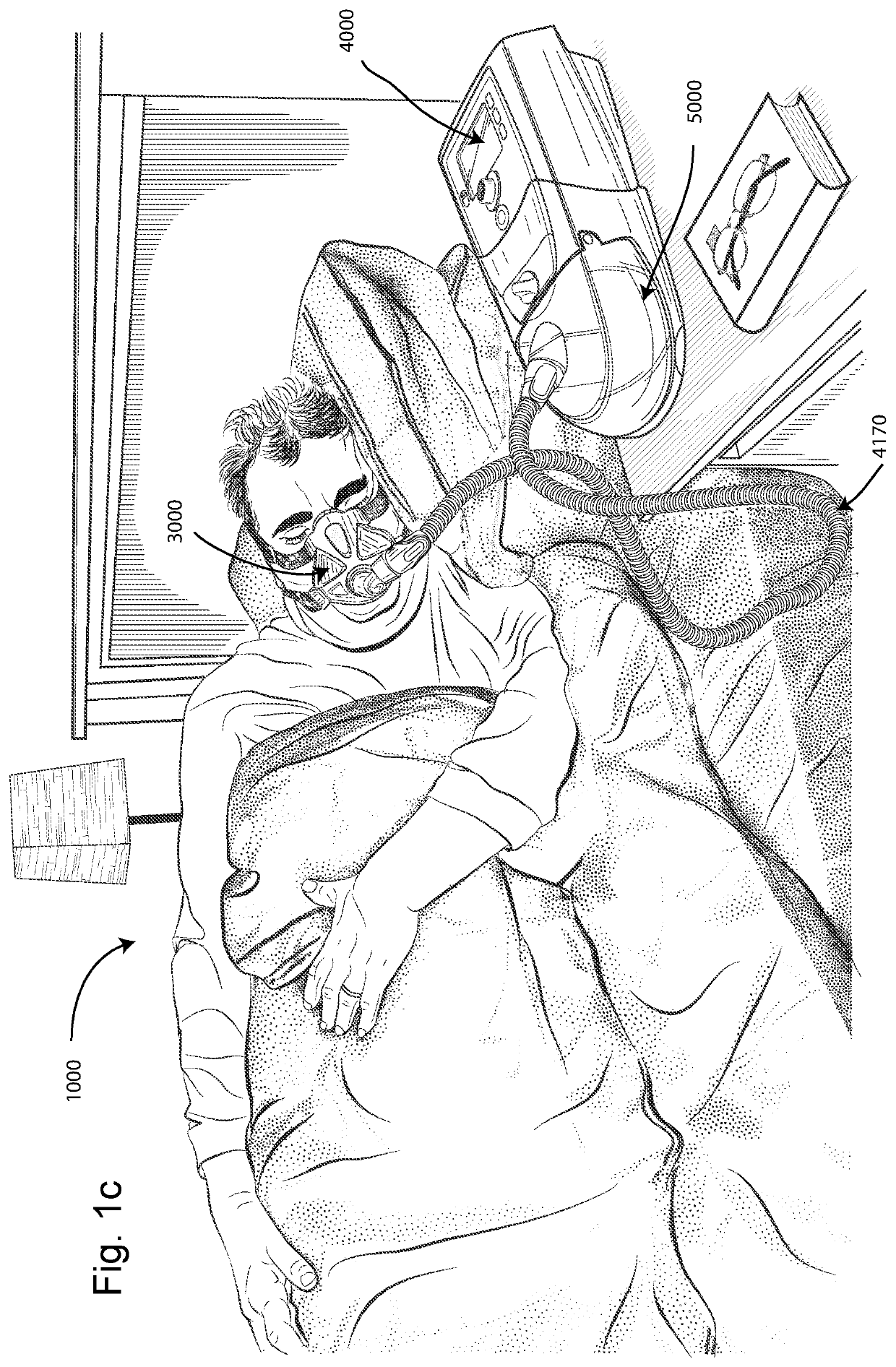Respiratory pressure treatment system
a treatment system and respiratory system technology, applied in the direction of respirators, operating means/releasing devices of valves, instruments, etc., can solve the problems of cardiovascular disease and brain damage, excessive daytime somnolence, harmful csr, etc., to improve comfort, cost, efficacy, and ease of use and manufacturability.
- Summary
- Abstract
- Description
- Claims
- Application Information
AI Technical Summary
Benefits of technology
Problems solved by technology
Method used
Image
Examples
Embodiment Construction
[0273]Before the present technology is described in further detail, it is to be understood that the technology is not limited to the particular examples described herein, which may vary. It is also to be understood that the terminology used in this disclosure is for the purpose of describing only the particular examples discussed herein, and is not intended to be limiting.
5.1 Therapy
[0274]In one form, the present technology comprises a method for treating a respiratory disorder comprising the step of applying positive pressure to the entrance of the airways of a patient 1000.
[0275]In certain embodiments of the present technology, a supply of air at positive pressure is provided to the nasal passages of the patient via one or both nares.
[0276]In certain embodiments of the present technology, mouth breathing is limited, restricted or prevented.
5.2 Treatment Systems
[0277]In one form, the present technology comprises an apparatus or device for treating a respiratory disorder. The appara...
PUM
 Login to View More
Login to View More Abstract
Description
Claims
Application Information
 Login to View More
Login to View More - R&D
- Intellectual Property
- Life Sciences
- Materials
- Tech Scout
- Unparalleled Data Quality
- Higher Quality Content
- 60% Fewer Hallucinations
Browse by: Latest US Patents, China's latest patents, Technical Efficacy Thesaurus, Application Domain, Technology Topic, Popular Technical Reports.
© 2025 PatSnap. All rights reserved.Legal|Privacy policy|Modern Slavery Act Transparency Statement|Sitemap|About US| Contact US: help@patsnap.com



